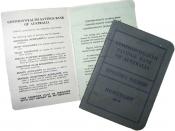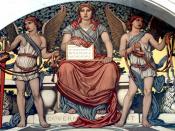Jonathan Rosenberg
Economics Assessment - Reserve Bank
The Reserve Bank of Australia (RBA) is Australia's central bank and was established by the Government. Its responsibilities include monetary policy and the maintenance of financial stability. The Governor (I J Macfarlane) chairs the Reserve Bank Board. The Bank's responsibilities, as well as the fact that it prints and issues Australia's currency notes, ensure that it remains an active participant in financial markets and the payments system. Its assets include Australia's holdings of gold and foreign exchange, which amount to around $A56 billion (30/06/00). The Australian Government receives all profits made by the Bank.
The bank was originally known as The Commonwealth Bank of Australia which was established in 1911. In 1945, the Commonwealth Bank was given power to administer monetary and bank policy during WWI and it was later formalized in the Commonwealth Bank Act and the Banking Act. In 1959 it was renamed the Reserve Bank of Australia but the original central banking functions of the Commonwealth Bank were still to be carried out.
In 1959, the Reserve Bank Act 1959 took effect making it Australia's central bank with its own Board, Governor and staff.
The Banks main role is the stability to the economy on Australia. By ensuring this, its main function is the implementation of Monetary Policy. Australia's monetary policy is guided by domestic economic objectives. The bank manipulates interest rates in pursuit of domestic policy objectives, including inflation and economic growth. The reserve bank meets 11 times a year (every 1st Tuesday of the month except January). In these meetings the board discusses whether it is going to lower or raise interest rates.
The RBA pushes interest rates up when the economy is growing too fast and lowers them when the economy needs to grow. By doing this,


